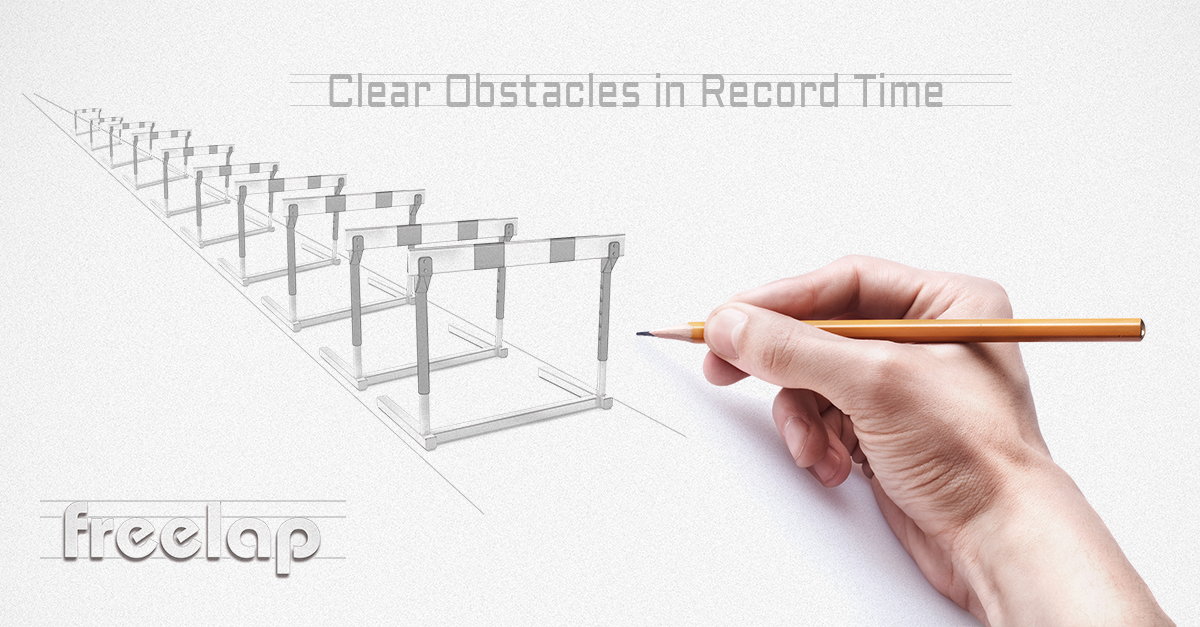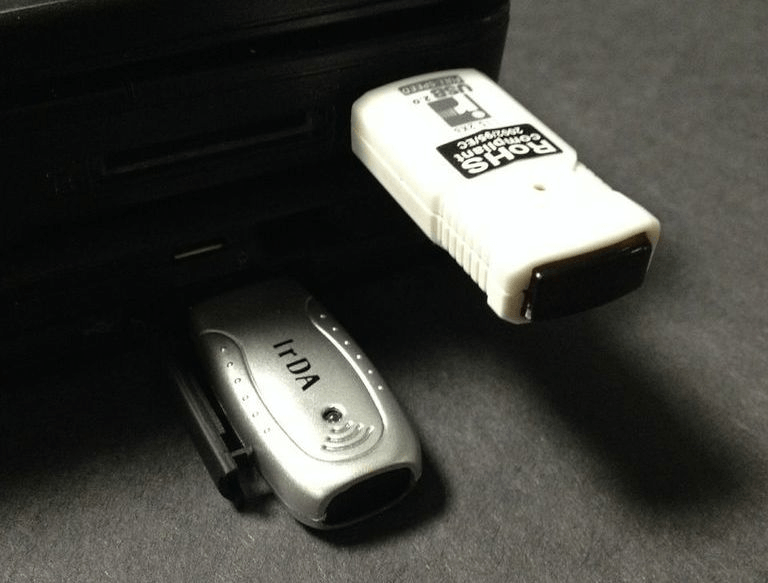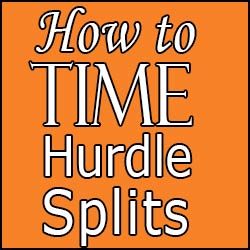

Dave Hegland is the Assistant Coach at Syracuse University. He is a former hurdler and has transformed his expertise to the hurdles as well as sprints. In the hurdles, he coaches Jarret Eaton (2012 NCAA 60 mH winner) and Ramon Sosa (2008 NCAA Indoor and Outdoor Championships in the 60 m and 110 m hurdles). In the sprints, he coached Canadian Michael LeBlanc (100 m 4th place finish at the 2007 NCAA Outdoor Championship). Hegland twice earned Division II All-America accolades and holds school records in the 60 m hurdles and 110 m hurdles at South Dakota State University.
1. The Transition from 8 to 7 Steps
Freelap USA — The transition from 8 to 7 steps is not as easy as doing some starts in the fall and hoping things work out. Could you share what general development aspects coaches in high school can think about so they are not impairing long-term development with 8 steps but not pushing 7 steps early. The transition and decision is very unique and copying elite athletes can be a disaster. What are your thoughts here?
Hegland — I don’t see the need for many high school athletes to even consider 7 steps. I think the strength and skill demands are so great that any potential move to 7 is almost always best left until an athlete is very accomplished with a traditional 8 step approach. Nearly all of the elite athletes we see 7-stepping today achieved quite impressive results on 8 steps before deciding to make the switch. I would think that as long as high school coaches are improving speed and power, they are paving the way for a potential switch down the road.
Carl’s Director’s Cut: I think we need to have more discussion on what speeds and stride parameters are needed for the seven steps in order to be effective. With athletes and coaches emulating elite performances, important development steps may be skilled in favor of trying to be faster by copying what is faster. I wonder how much general development is lost with athletes in high school if athletes are developing too much specific skill work in the earlier age groups. Dayron Robles was using a seven step approach as a teenager because he was a man at age 19, so we need to be honest on who is ready to take the next step, or a removal of one to be specific.
2. Intensive Tempo Sessions
Freelap USA: You have done intensive tempo sessions with athletes and use the data from those workouts. Could you share how you design such training options and how do you perform the analysis after exporting to excel? The readers would be interested in how you look at the rest periods as well as the times.
Hegland: We incorporate classical intensive tempo once every 7 or 10 days for about 4 weeks during our special prep. It’s nothing fancy, just simple stuff. We do time with Freelap and use the data to monitor consistency and hold people accountable to themselves. If a coach has multiple groups running, perhaps over various distances, it can be administratively difficult to keep an eye on everyone. Not having to worry about timing manually frees us up to monitor postures, injuries, etc. a bit more easily and make decisions accordingly. We don’t prescribe specific target times, but having some data on what the athletes ran the previous week, month, or year gives us some feedback as to whether or not we are in the ballpark.

Carl’s Director’s Cut — What is interesting with passive data collection is the response coaches have with the freedom of coaching. Instead of being an administrator and just keeping everyone on point with timing and rest periods, a coach is free to do the developmental work such as ensuring the reps are done properly with the right coaching and on the field observation. Collecting data should not be a decision of what one has to give up in training, it’s what is gained when coaches are free to do what improves the numbers acquired. Using a USB dongle pictured above is a fast way to handle a large group of athletes and the free software immediately exports to excel.
3. Hurdle Training Heights and Distances
Freelap USA — Heights and distances are sort of the main variables with hurdle coaches when doing speed work. Some athletes train with small hurdles and some athletes train with hurdles above 42 inches. What are your thoughts about programming here? Some are trying to rehearse sub 1.0 rhythms in the brain and some are focused on relaxing muscle groups or take off recruitment patterns. Any words of wisdom with selecting workouts?
Hegland — We haven’t used heights higher than 42”. We use 39” almost exclusively for our fast hurdling out of blocks, and tend to have enough technical issues at the lower heights that I don’t feel compelled to see those magnified at 42″. Freshmen are always apprehensive about not training over 42”, but they get over it once they run a few races and realize it’s not an issue. This isn’t a dogmatic thing, but the default for us would be 39”. We do less intense rhythmic runs over lower heights and closer spacings to first learn the 1.0 rhythms you mentioned and later to maintain them under fatigue. I think your point about relaxing muscle groups is one thing that separates the people who are innately good finishers and the people who tend to struggle over the last 4 hurdles. In my experience this ability to relax at speed is a very difficult thing to improve.

Carl’s Director’s Cut — The classic hurdle cycle splits can be broken down into precise Rhythmic Units, a proposed method of imprinting the specific motor skill by Gary Winckler. When athletes are in better shape and are peaking, they will find that the submaximal heights and distances will be able to be replicated in meets that have been rehearsed in practice. Rhythm is a huge area of potential for athletes and using timing of motor skill actions or sequences versus just all out velocity is an option. Timing is not just speed, it’s also a temporal skill that athletes can develop with measured techniques and good planning.
4. Cross Training
Freelap USA — Alternate means is popular in some circles but sometimes the problems associated with cross training like options can create problems of their own. Some syndromes manifest when injured athletes that are very explosive do routines like biking for fitness and start getting symptoms that cyclists get when they get problems from overuse patterns. Maybe pool workouts or just using lowered volumes is wiser than trying to replace too much running?
Hegland — I think people like Dan Pfaff, Charlie Francis, and Boo Schexnayder have generously outlined enough non-running alternative means work that we all have plenty of good “plan B” options by now. Sometimes alternative training may cause alternative injuries, as you mentioned. For example I think cycling can tighten the quads and hip flexors, possibly leading to issues when health improves and sprinting is re-introduced. We attempt to offset this by being diligent in keeping those areas loose and adding ancillary posterior chain work when we are forced to bike more. Every plan B has drawbacks, but I think you can try to anticipate and minimize those drawbacks.
Carl’s Director’s Cut — One of the common problems with the northeast in the US, as well as Canada and Northern Europe, is weather and surface limitations. Any option that is alternative will have unique problems that are specific to that modality, such as their own injury patterns and problems associated with doing too much of any one option. Management and acceptance to the limitations of alternative options must be adhered to as you can’t replace or replicate running, just have enough similarities to do damage control. Sometimes just addressing body composition and general fitness is wiser than trying to simulate something that simply is too unique.
5. Acceleration and Timing
Freelap USA — Acceleration and timing can lead to athletes putting too much emphasis on forcing the steps early, creating rigid locking execution that ruins longer acceleration work. What are your thoughts on using splits to see the times and visual feedback to see how athletes can still be fast early but smoother? Perhaps some video feedback you see with patient acceleration and ranges of motion or other execution styles?
Hegland — Due to the nature of the efforts, athletes are able to perform more acceleration runs than max velocity or speed endurance runs, so it’s easy for us to collect a lot of data to 30 m or 3 hurdles, for example. But I think you’re correct in that by dwelling on that data we sometimes get ourselves in trouble. We should rightly place a higher priority on what the athletes can do from 30-50 m or hurdle 3 to hurdle 5, for example. If they can’t achieve good results in those zones, then the initial acceleration has not been efficient, as the coach can see on film and the timing data confirms. Minor inefficiencies, slightly diminished ranges of motion, or mildly close takeoff distances may become disasters later in the race despite impressive early splits.
Carl’s Director’s Cut — The use of video and timing, along with the athlete’s feedback is an unbeatable combination. An athlete may be able to accelerate smoother with the same or better velocity because they are not rigid from having arousal being high by relaxation being poor. Rhythm is a motor skill adaptation from having enough exposure that the athlete is comfortable doing an all out explosive activity and various efforts are needed to keep an athlete from spinning their wheels. The classic adage of 9 or 10 effort, and 100% speed is a great reminder that speed is not just power, but alternating a coordinative burst of explosiveness and relaxation by fine-tuning athlete output.
Please share this article so others may benefit.
[mashshare]


